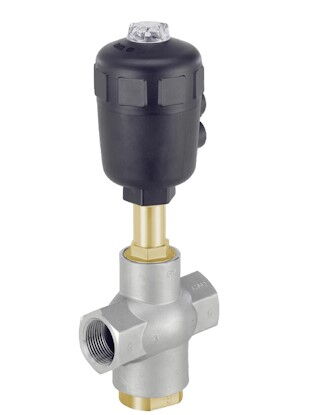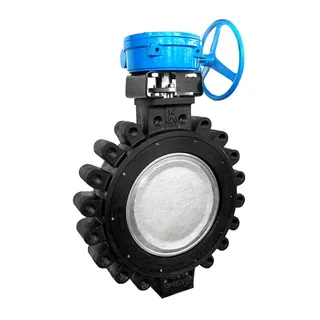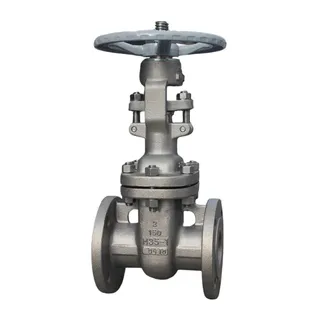In the industrial field, valves play an indispensable role as key components that control fluid flow. Needle valves and globe valves, as two common valve types, share certain functional similarities, yet each offers unique advantages and application scenarios in real engineering environments. This article provides a comprehensive comparison between needle valves and globe valves, helping readers better understand their characteristics and selection considerations, thereby enabling more reasonable decision-making in engineering applications.
With their distinctive structure and excellent performance, needle valves have become the little expert in precision fluid regulation. The following sections provide an in-depth look into their structural characteristics, advantages, and wide-ranging applications.

The core component of a needle valve is its uniquely shaped valve plug. The plug is conical and sharply tapered, resembling a needle tip, allowing it to insert precisely into the valve seat and form a tight seal. This structure ensures extremely high sealing performance when the valve is closed, almost completely preventing medium flow.
Additionally, the contact area between the conical plug and the valve seat is relatively small, which results in higher pressure per unit area and further enhances sealing reliability. The valve stem of a needle valve is typically long and slender. Flow control is achieved by rotating the valve stem to adjust the insertion depth of the plug, enabling fine-tuned regulation of flow rate.
Precise Regulation: The tapered plug design allows needle valves to control flow with exceptional precision. Even with minimal opening, they maintain stable and accurate regulation, making them ideal for situations requiring fine adjustment such as laboratory equipment and precision instruments.
High-Pressure Sealing: Thanks to their unique sealing structure, needle valves maintain excellent sealing performance under high-pressure conditions. This makes them highly suitable for controlling high-pressure gas or liquid media, such as in high-pressure pipelines used in the oil and natural gas industries.
Suitable for Small Flow Rates: Due to the small contact area between the valve plug and seat, needle valves are particularly suitable for small-volume fluid control. They perform exceptionally well in scenarios requiring micro-flow regulation, including chemical reagent delivery and micro-sampling systems.
Strong Compatibility: Needle valves commonly use threaded connections, making them convenient for integration with various small devices and piping systems. This connection method is easy to install and provides reliable sealing that effectively prevents leakage.
Needle valves are widely used in situations where precise control of flow and pressure is required. For instance:
In flame-cutting equipment, they are used to regulate flame temperature by precisely adjusting the fuel gas flow to achieve optimal cutting performance.
In instrumentation pipelines, needle valves serve as essential components for opening or shutting off passages while also enabling flow adjustment to ensure accurate measurements.
In pharmaceutical and chemical production processes, they play a crucial role in delivering micro-quantities of reagents, ensuring process accuracy and safety.
After understanding the fine-tuning capabilities of needle valves, we now turn to another indispensable valve type widely used in the industrial sector, globe valves. If needle valves represent precision control, globe valves are undoubtedly the reliable guardian of cutoff operations. The following sections explore the structure, features, and application scenarios of globe valves.

A globe valve is a type of forced-sealing valve. Its sealing principle relies on the pressure exerted by the valve stem to press the valve disc tightly against the valve seat, thereby preventing medium flow. The valve disc is typically flat or conical, and opening or closing is achieved by raising or lowering the valve stem.
This structure provides reliable sealing when the valve is closed, but requires relatively high operating force because the valve must overcome medium pressure and friction resistance during operation.
Reliable Sealing Performance: When fully closed, a globe valve offers dependable sealing that effectively prevents medium leakage. This makes it suitable for applications requiring frequent operation or quick shutoff, such as water treatment systems or HVAC projects where globe valves often serve as isolation valves for pressure gauges or differential pressure transmitters.
Strong Adaptability: Globe valves feature a simple structure and can adapt to a wide variety of media and operating conditions. They can be used across various pressure and temperature ranges and do not require particularly clean media, making them suitable for systems containing impurities.
Easy Operation: Globe valves are easy to operate, flow shutoff or opening can be achieved simply by rotating a handwheel or handle. This ease of use also contributes to simplified maintenance and inspection.
Low Cost: Compared with more complex valve types, globe valves are relatively inexpensive to manufacture and purchase. Their affordability makes them cost-effective options for projects with limited budgets and moderate operating requirements.
Globe valves are widely used wherever flow cutoff is required. Typical applications include:
Process pipelines where globe valves regulate or shut off fluid flow
Aerospace systems, where globe valves contribute to medium transmission, cutoff, and regulation, directly influencing overall equipment safety
Low-pressure water treatment systems and HVAC projects, where globe valves serve as isolation valves for pressure gauges or transmitters, facilitating regular inspection and calibration
The following comparative analysis focuses on sealing performance, regulation capability, medium adaptability, operating force, structure, cost, and maintenance. Understanding these differences helps guide valve selection in real-world engineering applications.
Needle valves offer superior sealing performance under high pressure. Their tapered plug forms a line contact with the valve seat, creating high compressive force and excellent sealing capability.
Globe valves rely on a surface-to-surface sealing mechanism. While sealing is reliable when fully closed, partially open positions expose the sealing surface to medium erosion, accelerating wear. Therefore, for high-pressure and small-flow applications, needle valves provide significantly better sealing performance.
Needle valves excel at fine flow regulation, with precise control achievable through gradual rotation of the valve stem.
Globe valves, on the other hand, are primarily designed for on/off operation. Their regulation performance is relatively poor, and they are unsuitable for long-term throttling in partially open positions.
Needle valves are ideal for small-flow, high-pressure applications involving clean gases or liquids. Their effectiveness is reduced when media contain particulate impurities.
Globe valves are compatible with a broader range of media and operating conditions, including fluids with impurities. However, the material of the valve seat and disc must be selected based on corrosion and wear resistance requirements.
Globe valves require higher operating force due to the need to overcome medium pressure and packing friction. Their valve stems are typically thicker to avoid bending.
Needle valves require comparatively lower operating force. Their tapered plug and slender stem offer better fine-adjustment capability.
Globe valves have lower manufacturing costs and are easier to maintain.
Needle valves, while superior in performance, are more expensive and require more frequent cleaning and inspection due to potential clogging and wear at the small sealing surfaces.
Selecting the appropriate valve type is vital for system stability, efficiency, and safety. The following guidelines are based on operational requirements, medium characteristics, cost considerations, and safety standards.
For precise flow and pressure control under high-pressure, small-flow conditions → Needle valve
For basic shutoff control in low-pressure, clean media systems → Globe valve
Clean media, precise regulation required → Needle valve
Media with impurities, general shutoff needed → Globe valve
Budget-limited projects → Globe valve
High-precision or high-pressure systems → Needle valve, despite higher cost
High-pressure, high-precision, or aerospace applications → Needle valve
General industrial environments with moderate safety requirements → Globe valve
Flame-Cutting Equipment: Needle valves are essential for regulating flame temperature by precisely controlling fuel gas flow. Their fine regulation capability and high-pressure sealing ensure safe and efficient flame-cutting operations.
Water Treatment Systems: In low-pressure water treatment systems, globe valves commonly serve as isolation valves for pressure gauges or transmitters. Their easy operation, reliable sealing, and low cost make them ideal for these applications.
Chemical Production Processes: Needle valves play an important role in delivering micro-quantities of chemicals or catalysts. Their ability to accurately control minute flow volumes ensures safe and efficient chemical production, especially under high-pressure or corrosive conditions.
Needle valves and globe valves, as two commonly used valve types, each possess unique structural characteristics and advantages. Needle valves offer precise regulation, excellent high-pressure sealing, and suitability for small-flow applications, making them ideal for precision control environments. Globe valves provide reliable shutoff performance, strong adaptability, easy operation, and cost-effectiveness, making them suitable for general-purpose flow control.
In real-world applications, selecting the right valve requires careful consideration of operating conditions, medium characteristics, cost, maintenance requirements, and safety expectations. With a deeper understanding of the characteristics and differences between needle valves and globe valves, engineering professionals can make better-informed decisions to ensure system stability and efficient operation.



